From the June 2025 issue of Apollo. Preview and subscribe here.
For many visitors to the Metropolitan Museum of Art in recent years, the Michael C. Rockefeller Wing was a part of the museum that was rushed through, a darkly lit shortcut from the Greek and Roman galleries to the modern and contemporary art wing, the special exhibition galleries and the elevators to the rooftop garden. A head might be turned by the glitter of pre-Columbian gold or a stately African sculpture, but few explored the depths of the 3,700-square-metre space, which houses an exceptional collection of art from Africa, the Americas and Oceania. ‘This was like a super highway,’ acknowledges Alisa LaGamma, the curator in charge of the department. ‘One of the problems was that you didn’t have sight lines that extend to the furthest reaches of the wing.’
That has all changed following a four-year, $70m renovation of the galleries, designed by Kulapat Yantrasast of WHY Architecture in collaboration with Beyer Blinder Belle Architects, which reopened to the public on 31 May. Now, when visitors enter the first galleries in the wing, presenting African art, they are greeted by a light-filled expanse and a barrel-ribbed ceiling, inspired by the interior of the Great Mosque in Djenné, Mali. ‘When we were guiding the architect to rethink the space with us, he said the original designers were coming at this project as modernists, they were accustomed to very institutional spaces,’ LaGamma says. ‘And we want to think outside of the box, in relation to the cultural landmarks and to the architecture that’s relevant to the places that the art is from.’ The galleries on the southern end of the wing (next to the new honeycombed UV-filtering glass curtain wall), which feature art from Central and South America, are based on the U-shaped structures of ancient sites such as Tikal in Guatemala. The arts of Oceanic cultures are installed diagonally, like a flowing sea across the middle of the wing.
‘A priority for us was to give each of these three collections a character of its own,’ LaGamma says, ‘but also we didn’t want them to be homogenised, so that you lost the sense that there are distinct traditions.’ Each collection has a main entry point with an introduction, but is also broken into different ‘chapters’ explaining the varied cultures and traditions found across the regions.
The new architecture also helped decide the layout of the installation – the intense light now coming from the south-facing glass wall meant the more resilient stone and metal objects of the Americas collection would live happily there. In the original building, the shades on this side were almost invariably drawn, somewhat defeating the purpose of a glass wall. ‘We measured how the light flows into the space,’ LaGamma says, ‘and the architect positioned two light mitigation walls so that we block out most of the harmful rays.
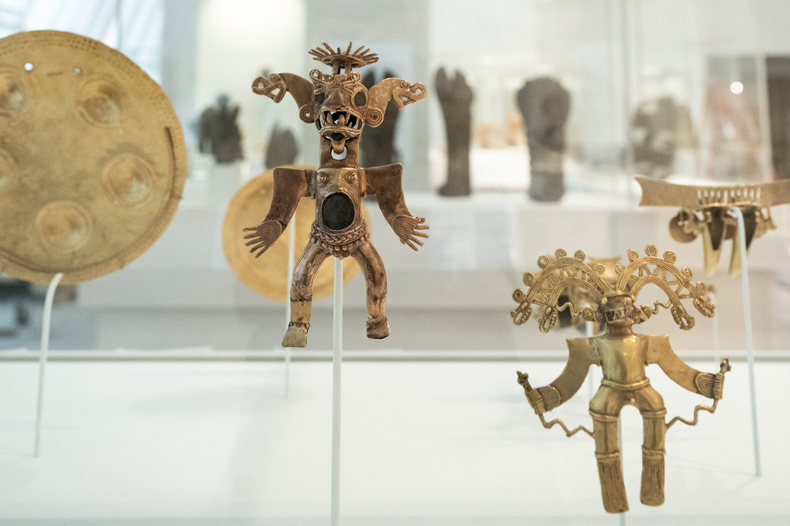
A display case of gold Chiriqui figures in the Arts of the Ancient Americas galleries in the Michael C. Rockefeller Wing of the Metropolitan Museum of Art, New York. Photo: Paula Lobo
‘We also recognised that the Oceanic works are truly monumental, and they sit best in the high-ceilinged spaces,’ LaGamma adds. So now towering works, like the carved bis poles created by the Asmat people of New Guinea as part of a ceremony about death and revenge, curve against the far end of the first gallery like a sacred grove, mirroring their traditional placement among the sago palms, where their symbolic fertility would feed into the forest floor. ‘Working with the architect on gutting this space was really an exercise in both making it work better for the collection and activating the entire space,’ LaGamma says.
This reactivation can be found in all corners of the wing, which first opened to the public in 1982. That followed a decades-long effort to build a dedicated collection of art from these regions in the museum by Nelson A. Rockefeller, a long-time Met trustee and former New York governor and US vice-president. So dogged was Rockefeller that, when his aspirations for the Met were initially rebuffed in the 1930s, he went ahead and opened his own museum in 1957, in a brownstone owned by his family next door to the Museum of Modern Art. From a contemporary perspective, it was somewhat pejoratively named the Museum of Primitive Art, but its aims were to show that, as Rockefeller wrote, ‘the creative expressions of great civilizations in Africa, Oceania, and Precolumbian America ranked on a par in terms of aesthetic value with great art forms of other so-called classical civilizations’.
Over the course of 30 years, the Museum of Primitive Art grew to include more than 3,500 works, many donated by other private collectors, and organised a number of blockbuster exhibitions and supported important scholarship. Rockefeller eventually convinced the Met to take the entire kit and caboodle – artworks and curatorial staff – to fill a new wing named after his son, who died during a collecting expedition to New Guinea in 1961. When the building finally opened, three years after the death of Nelson Rockefeller himself, the New York Times reported that it was almost as large as the nearby Whitney Museum of American Art’s Breuer-designed home, half a mile south on Madison Avenue. ‘It was a museum that was plunked down on the southern end of the Met,’ LaGamma says.
This also meant that, for many years, the department essentially operated like a private museum within the museum, says LaGamma. An African sculpture specialist who was born in the Democratic Republic of Congo (her father was an American diplomat), she has been a curator at the Met since 1996. This mentality is something else that has changed with the renovation. ‘For the last decade, this project has been about really integrating this wing into the larger institution,’ LaGamma says. So she has been working with her colleagues in charge of the adjoining galleries and other departments to include works that bring out ‘parallels and differences’ between cultures. ‘Throughout, we’re leveraging these bridges between the Rockefeller Wing and the museum at large, because that’s what makes seeing this non-Western art a special experience.’
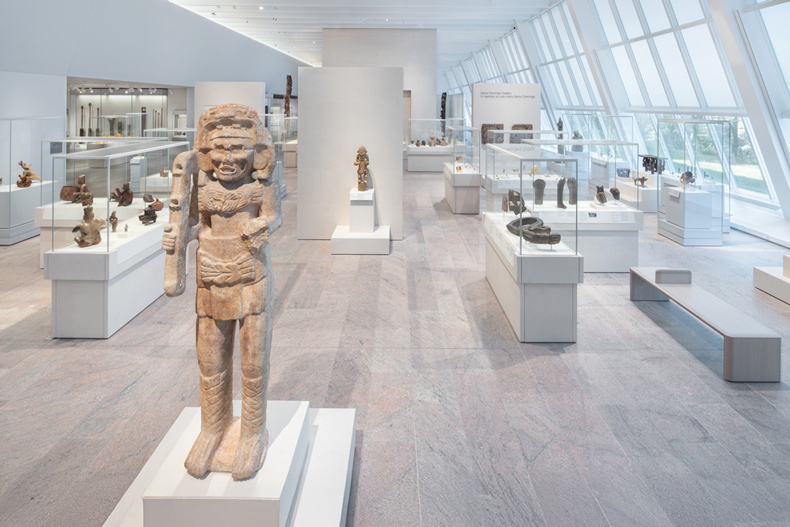
A stone sculpture of the Maya rain god Chahk (800–1,000 AD) stands in the Arts of the Ancient Americas gallery in the Michael C. Rockefeller Wing of the Metropolitan Museum of Art, New York. Photo: Bridgit Beyer
The threshold to the Greek and Roman galleries, for example, features a Nubian stele, on long-term loan from the Museum of Fine Arts, Boston, drawing connections between the African and Egyptian collections. There is also a display case that has, on one side, a carved wooden mask by the Baule people of Côte d’Ivoire representing an ideal of femininity, and on the other a Roman stone mask of Pan. Both were linked to theatrical performances, but their materials and treatment of subject matter are very different. ‘She’s the beauty, he’s the beast,’ LaGamma says.
Another connection is made between the adjoining galleries for European sculpture and decorative arts through a display of ivory objects, including a delicate spoon and a side-blown horn known as an oliphant, carved by artisans living along the coast of West Africa for the earliest Portuguese traders, who arrived there at the end of the 1400s. According to LaGamma, ‘Those kinds of works for export entered princely collections in Europe,’ including those of the Habsburgs.
The collection is further enlivened, as other historic departments in the Met have been, by the inclusion of more contemporary art. There is a display of African photography, including work by the South African artist Zanele Muholi, a special exhibition on the Senegalese-French modernist Iba Ndiaye, bark paintings by the Australian Yolngu artist Nonggirrnga Marawili and a series of monumental wall panels by the artist Taloi Havini, who was born on Buka Island, Bougainville, which is in the Solomon Islands archipelago but administered by Papua New Guinea.
Havini’s works, which will be visible from Central Park through the glass curtain wall, continue a tradition of the Met commissioning site-specific art for the Rockefeller Wing. Its famous Kwoma ceiling, recreating a ceremonial structure found in the Asmat region in New Guinea and made up of painted panels, was commissioned from artists in the village of Mariwai by the department’s first chair, Douglas Newton, for the opening of the original building. A new video feature in the gallery tells this history and includes the names and photographs of some of the artists; the ceiling’s reinstallation was done in consultation with the artists’ descendants.
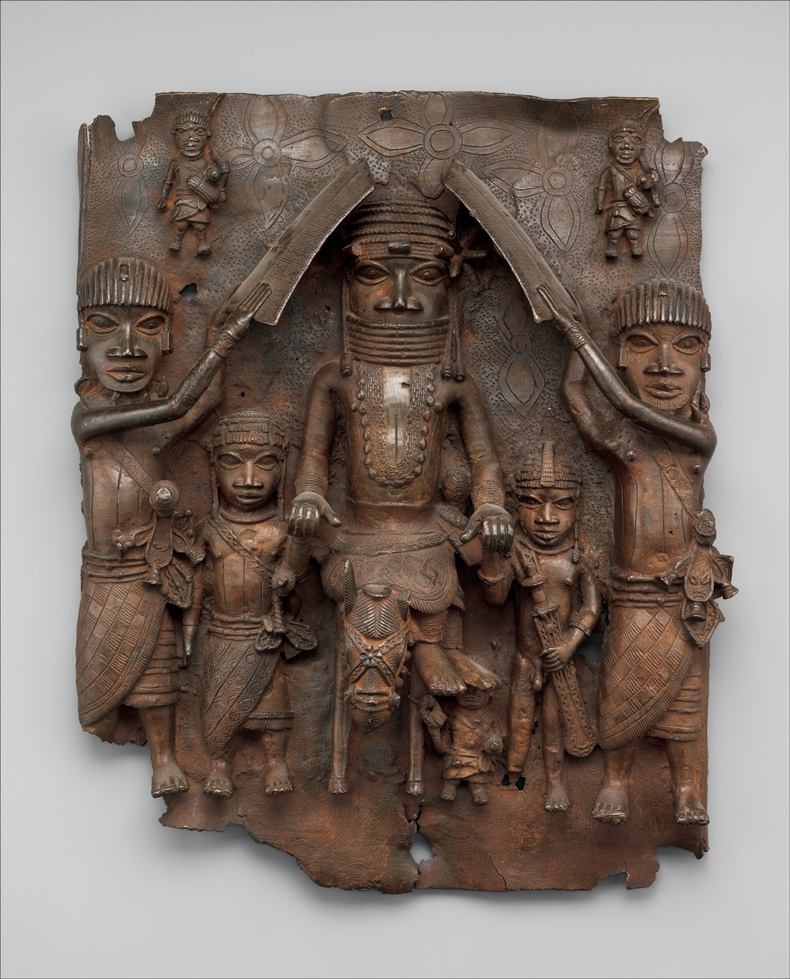
Plaque depicting warrior and attendants (16th–17th century), Nigeria, Court of Benin. Metropolitan Museum of Art, New York
LaGamma aims consistently to give long-overdue credit to previously unidentified artists who created objects in the Met’s collection. ‘One of the things that has always been important to me as a curator here is to get to the heart of who the individuals who created these works were,’ she says. Dozens of pieces in the African and Oceanic galleries now include artist bios, although these have been harder to source for the archaeological materials in the Americas collection. Among the artists receiving this treatment is Olowe of Ise, who was active in south-western Nigeria at the start of the 20th century. ‘He was highly sought after by Yoruba sovereigns in the Ekiti region who, after years of civil war, were refurbishing their palaces,’ LaGamma says. The new installation includes the left side of an impressively carved palace door, commissioned in 1904 to commemorate the visit of a British delegation to the court, on loan as a promised gift from the collection of Carol and Jerome Kenney. The other half of the door is now in the Smithsonian Institution’s National Museum of African Art.
A concerted effort has also been made to include media and materials that were historically absent from the collection, such as textiles, beadwork, basketry and pottery – things often considered ‘womens’ work’. Such artforms were ‘critical to the aesthetic landscapes in all of these cultures,’ LaGamma says, ‘so we’ve tried to insist in each of the chapters that we have a better balance to incorporate these.’ A gorgeous tie-dyed ceremonial robe or cloak, painstakingly handwoven from raffia fibres by Dida women in southern Côte d’Ivoire, for example, not only rounds out an understanding of the masks and sculptures displayed alongside it, but also speaks to a history of fashion innovation. ‘This kind of fabric inspired Issey Miyake in the creation of his pleated clothing,’ LaGamma says.
Around a quarter of the works in the African displays are new acquisitions and donations from long-time patrons of the department, LaGamma adds, such as Ceil and Michael E. Pulitzer, who endowed the curator’s post. Even the works that have been in the Met’s collection for decades have been given an update. For example, a gallery of some 40 objects made for the court of Benin includes a video showing artists from the Igun Eronmwon (the brass-casting guild) working today in Benin City, Nigeria. The display of a set of 16th-century brass plaques, looted by British forces in a raid on the royal palace of Benin in 1897, also presents recent art historical research by Kathryn Wysocki Gunsch, curator at the Museum of Fine Arts, Boston. She found that these objects had originally been commissioned to wrap the interior columns of the Oba’s private audience chamber and were rarely seen by outsiders. When the British invaded, they had been in storage for more than a century.
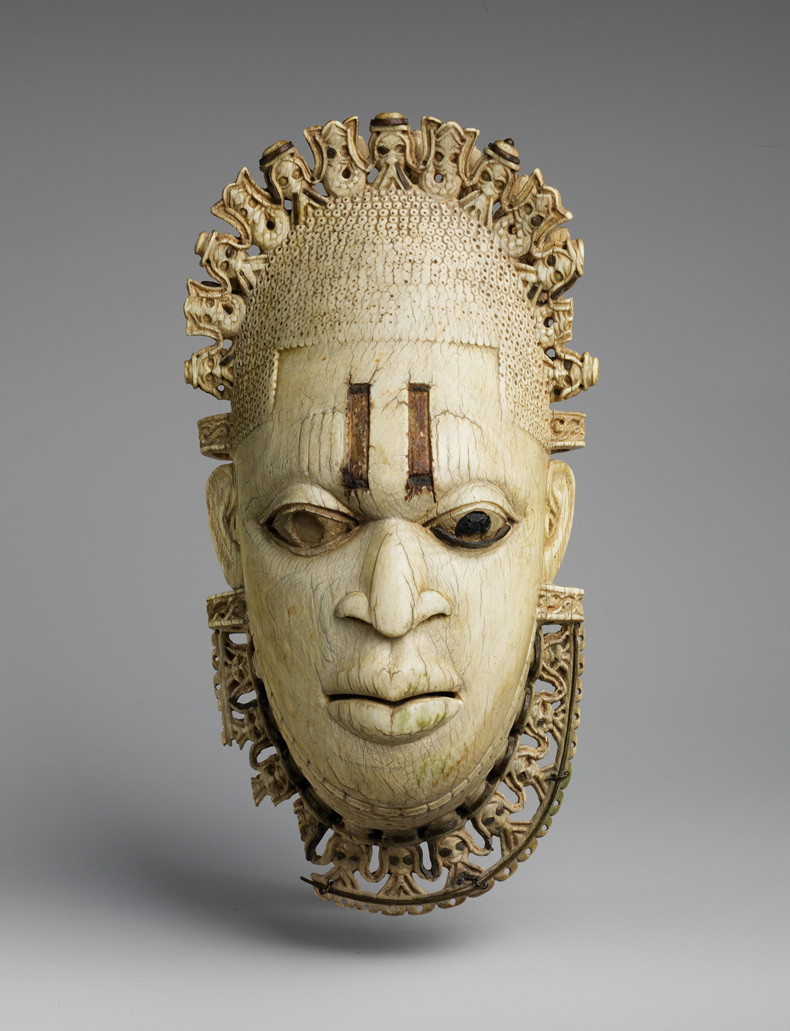
Queen Mother Pendant Mask (16th century), Nigeria, Court of Benin. Metropolitan Museum of Art, New York
The Met relates the tumultuous history of the Kingdom of Benin in wall text, but it downplays the continuing controversy over the dispersal of the court’s art. As part of a wave of recent repatriations from international museums, the Met returned two panels and an Ife head to Nigeria in 2021, but retains around 160 works of art taken from Benin, including the ivory Queen Mother Pendant Mask, a jewel of the Rockefeller collection. A note at the end of one wall text says that a Memorandum of Understanding between the Met and Nigeria was recently signed ‘fostering ongoing exchanges’ and that the museum is one of 136 contributors to the Digital Benin database, funded by the Ernst von Siemens Kunststiftung, which catalogues the collection of the Benin court.
All this work on the collection reflects a department-wide effort to keep the interpretation of these holdings up to date – something that became painfully clear was not possible within the limitations of the old building. ‘We felt frustrated that we were able to do these incredible special exhibitions outside of the wing, that kept up and advanced the understanding of these artistic traditions. But then once those shows came down, they weren’t incorporated into the lasting footprint of the permanent collection,’ LaGamma says. ‘So, we were marching along on one route, but the permanent collection wasn’t changing enough.’
This was because the first generation of curators who were planning the wing took the view that ‘You don’t need much information, you just commune with these objects, and the formal qualities were enough,’ LaGamma adds. This ignored the spiritual, ceremonial or mythological aspects behind much of the work on view. ‘We know that that’s a disservice to the complexity of the art, not to offer up that information. The very existence of this wing generated excitement and scholarship and a wave of new content. Not to flow that in with the experience of viewing the art – it’s an abnegation of your expertise as an institution,’ LaGamma says. ‘Hopefully this addition, in 30 years, will need an upgrade.’
The Michael C. Rockefeller Wing of the Metropolitan Museum of Art, New York, reopened on 31 May.
From the June 2025 issue of Apollo. Preview and subscribe here.


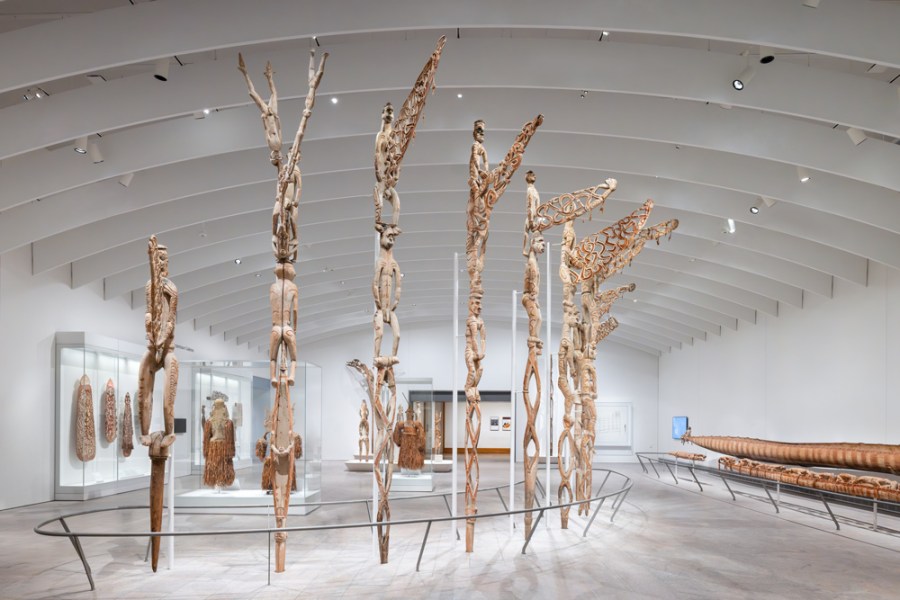
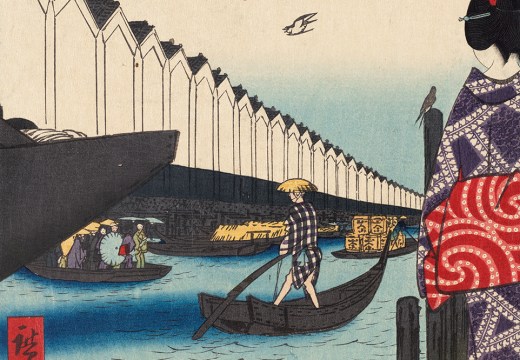
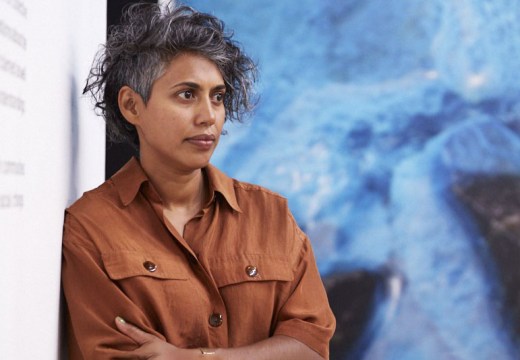


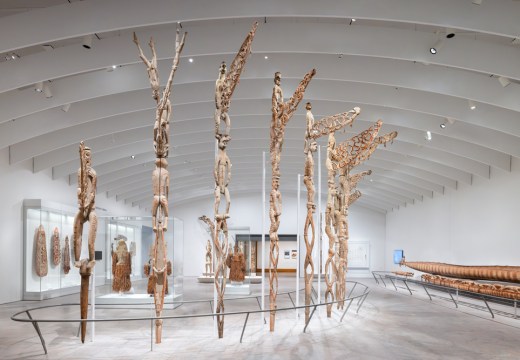

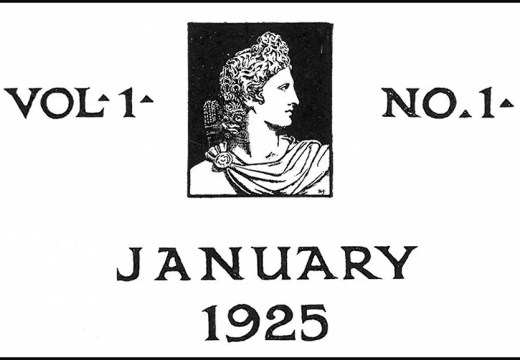

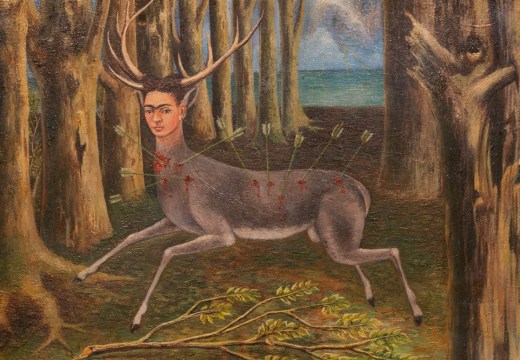
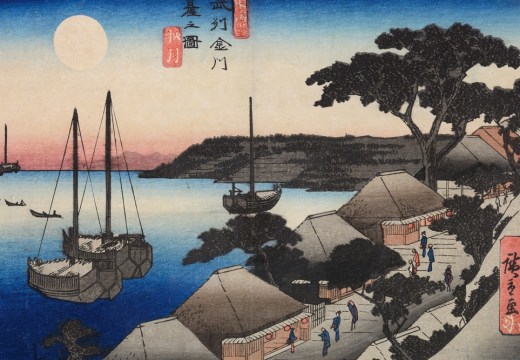
![Masterpiece [Re]discovery 2022. Photo: Ben Fisher Photography, courtesy of Masterpiece London](https://src.apollo-magazine.com/wp-content/uploads/2022/07/MPL2022_4263.jpg)
Apollo at 100